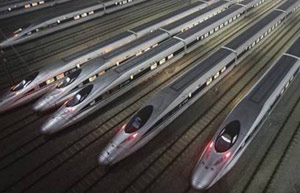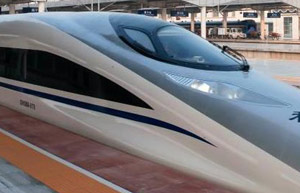With the most extensive high-speed network, gaze shifts to overseas markets
In Asia, Africa, Australia and Europe, Chinese Premier Li Keqiang has been telling government leaders, railway planners and company executives that China's high-speed railway technologies are safe, reliable and economically competitive.
Largely due to his persistent promotion, Chinese enterprises have been selected to take part in the construction of a high-speed rail line between Belgrade, Serbia, and Budapest, Hungary, and a modern route to link Mombasa and Nairobi in Kenya. A high-speed railway research and development center will also be set up in Africa.
In September, Li and his Russian counterpart Dmitry Medvedev signed an agreement in Moscow that urges Chinese and Russian firms to hold talks on design, financing, supply facilities and construction for a 770-km high-speed line connecting Moscow and Kazan, an important metropolis on the Volga River.
Under Russia's plan, the line will form the initial section of a railway stretching to Beijing, with completion scheduled for 2018 in time for the World Cup soccer finals in Russia. Kazan is one of the host cities.
Trains running on the line will reach speeds of up to 400 km/h, shortening the traveling time between the two cities from 13 hours to three and a half, according to the Moscow Times newspaper.
"China has a lot of advanced technologies and experience in railway construction and operation, and its government is willing to export them, while Russia wants to improve rail service and upgrade infrastructure, so the two can work together in this field," said Yang Hao, a professor at Beijing Jiaotong University who researches rail transport management.
China has also included three rail lines in its medium- and long-term plans that will link the country to Southeast Asian nations. Engineers have started preliminary work on the network, according to sources close to China Railway Corp, successor of the dissolved Ministry of Railways.
The lines would start in Kunming, capital of Yunnan province, and connect Laos, Vietnam, Cambodia, Myanmar, Thailand, Malaysia and Singapore. They form the southern part of the ambitious Trans-Asian Railway proposed in the 1960s, which finally took a step toward realization after 18 countries signed an agreement on the network in 2006.
The huge network aims to provide a continuous 14,000-kilometer rail link between Singapore and Istanbul in Turkey, with possible onward connections to Europe and Africa, according to the United Nations Economic and Social Commission for Asia and the Pacific.
Looking to the West
With their technological and engineering capabilities advancing rapidly, Chinese railway enterprises have gradually found that projects in developing nations can no longer satiate their growing ambitions. They have begun to knock on the doors of developed countries that once looked down on Chinese railway technology.
During a visit to California last week, a delegation of Chinese officials and representatives of Chinese high-speed railway companies discussed the possibility of participation in California's high-speed rail, said professor Sun Zhang, a railway researcher at Tongji University in Shanghai.
"We want to learn about the high-speed rail policies and the investment environment in California, and introduce Chinese high-speed rail products and technology to our Californian friends," said Zhang Yujing, president of the China Chamber of Commerce for Import and Export of Machinery and Electronic Products and head of the delegation. "By doing so, we want to further discussions to create better business opportunities."
 |
 |
| Mexico cancels Chinese bullet train deal | CSR unit raring to go in Southeast Asia |
